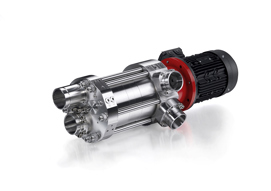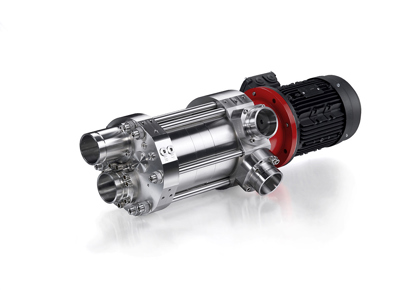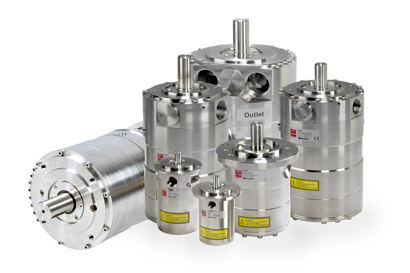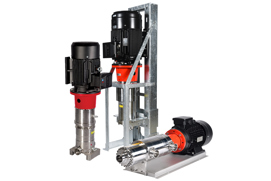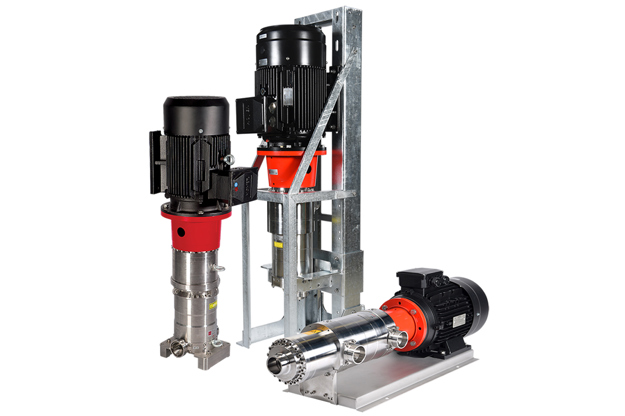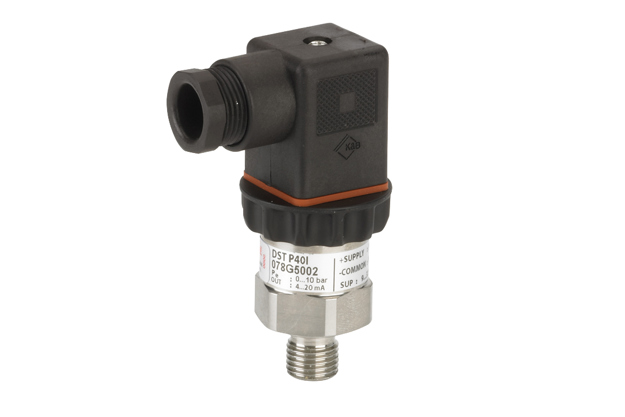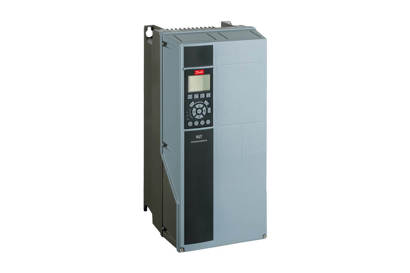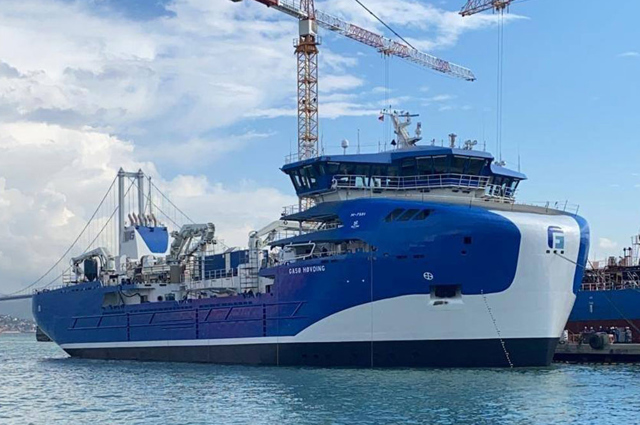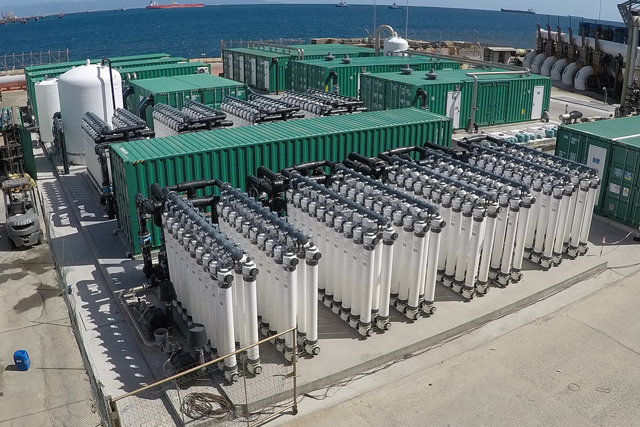Maintenance of high-value assets is critical to mitigating operational risks. As the SWRO industry evolves, more owners and operators will transition from simple corrective and preventative maintenance strategies and increasingly apply data-supported insights to optimize performance and profits.
Managing SWRO’s operational risks
Companies that own and operate SWRO plants face a range of risks. Most managers need to manage credit risks, such as customers defaulting on payment or suppliers changing terms and conditions. Depending on their business model and size, some might have to consider market and liquidity risks, too. But everyone responsible for SWRO must deal with a variety of operational risks and use three KPIs, in one form or another, to manage them:
- Unscheduled asset downtime: Among SWRO’s many operational risks, the risk of production stops due to unplanned downtime looms largest. If a desalination plant unexpectedly stops producing water, customers downstream must find it somewhere else. As this is impossible in many cases, the consequences could be devastating for consumers and companies that rely on the desalinated water. In addition to thirsty and unhappy customers, legal action may result. Furthermore, equipment failure can result in significant financial losses due to both fines and lost revenue.
- Overall equipment effectiveness (OEE): OEE is often considered as the most important productivity metric. It takes into account three parameters:
· Availability, or planned and unplanned production stops. If an SWRO plant runs without stops during planned production time, its availability score would be 100%.· Performance can refer to many things, but for SWRO, specific energy consumption per m3 is the most important metric. If an SWRO plant runs as energy efficiently as possible, its performance score would be 100%.
· Quality is measured as the chemical properties of the produced water.
- Operating margins: The financial cost per m3 of produced water is also important, and actual operating margins must be compared to budgets. Is the plant producing water at projected costs? If not, why? Ultimately, a plant’s operating margins should be benchmarked against comparable plants to see how profitably the plant could operate – if it were as good as best-in-class plants of similar size and type.
Which maintenance strategies are right for SWRO?
Everything requires maintenance, but for SWRO operators, some things matter more than others: pumps, membranes, and ERDs. All three are critical to uptime, productivity, and profitability – and it is therefore natural that maintenance regimes are dominated by attention to their optimal performance.
Another factor that influences SWRO maintenance, especially for small and medium-sized plants, is accessibility. Owners and operators of the many SWRO plants located in remote locations must consider the costs and delays that result from sending parts and service professionals to the places where SWRO is the only way to produce enough potable water – isolated coastal areas, smaller islands, marine and offshore installations, etc. Equipment reliability, service interval length, and ease of maintenance all take on more importance in these circumstances.
Generally speaking, SWRO owners and operators, like all others who need to mitigate operational risks, choose between four basic maintenance strategies. The first two of these approaches are common, and do not depend on data. The last two rely on data-driven insights and can also be considered as levels of digital maturity: the higher the level, the greater its complexity and potential rewards.
Is SWRO maintenance ready to enter the digital age?
First the good news. Early adapters have already digitized parts of SWRO maintenance and are showing the way towards more maintenance being driven by more data-supported insights. As we’ll see below, digital progress is being made around the world in small, medium, and large SWRO plants alike. Plenty of good examples of condition-based maintenance in SWRO already exist, and more widespread adaptation of it and predictive maintenance is sure to follow.
On the other hand, we think it’s fair to say that the majority of the world’s installed base of more than 22,000 desalination plants are primarily maintained by a mix or corrective and preventative maintenance strategies. When preventative maintenance is done right, operators follow OEM maintenance recommendations, most of which prescribe service at intervals of operating hours whether or not such maintenance is required by actual component conditions. When preventative maintenance is done wrong and operators do not follow OEM recommendations, poor maintenance can quickly result in unplanned downtime, lower-than-optimal productivity, and poor operating margins.
Some companies are showing the way
Synauta is a pioneer in the digital optimization of reverse osmosis plants. The Canadian startup uses machine learning to recommend optimal clean times for membranes, and its algorithms can save cloud-connected plants up to 15% OPEX by reducing chemical usage, extending membrane lifetimes, and improving energy efficiency. It also has an energy saving solution that uses machine learning to recommend daily set points that operators enter into their SCADA systems, enabling them to save up to 18% of RO energy costs.
According to founder and CEO Mike Wolf, the machine learning solutions quickly become “smarter” than even the most experienced operators. “Our algorithms are complex, but our business model is quite simple,” he explains.
“We first prepare a report to determine how much OPEX or energy our solutions can save a particular plant. If the business case is strong, and it usually is, we then apply machine learning to analyze the plant’s data and make recommendations – either daily set point recommendations for energy saving, or recommendations for when to clean individual trains for chemical saving.”


Wolf expects the market for digital optimization of RO plants to grow rapidly. “Within five years, I think machine learning will be the rule, not the exception, in supporting maintenance and optimizing operations for RO plants everywhere,” he says. “The financial, chemical, and CO2 savings that these solutions provide are simply too great to ignore. Digital maintenance and optimization will become standard in RFQs.”
Another example of data-driven maintenance comes from Italy. In Milan, HP Watermakers have developed an innovative range of cloud-connected SWRO systems used primarily for marine and remote land based applications.
Owner and CEO Gianni Zucco is similarly bullish on the growing digitalization of SWRO operations and maintenance. “We are the first SWRO provider to integrate with the major navigational plotters, such as Garmin and Raymarine, which dominate the cockpits of yachts worldwide,” he reports. “Our Part-NET interface lets crews onboard and remote service experts monitor operations, change set points, trouble shoot, and more.”

What do you think? What is your experience with condition-based and predictive maintenance for SWRO? Ping us on social media to join the conversation.
Related blogs
Read more about our solutions for desalination
-
if (isSmallPicture) {


 Energy recovery device for medium to large SWRO applications
Energy recovery device for medium to large SWRO applicationsThe first active ERD for medium and large plants integrates highly effective isobaric pressure exchangers with a low-voltage motor to eliminate the risk of rotor overspin, reduce mixing and biofouling, and facilitate smarter automation. Covering train sizes from 1,500 m3/day and above.
-
if (isSmallPicture) {


 High-pressure pumps for SWRO applications
High-pressure pumps for SWRO applicationsThe range of high-pressure APP pumps is optimized for both landbased, off-shore and marine sea water reverse osmosis applications. Available with or without motor.
-
if (isSmallPicture) {


 iSave® energy recovery devices for high-pressure membrane applications
iSave® energy recovery devices for high-pressure membrane applicationsWith a 3-in-1 design that integrates highly effective isobaric pressure exchangers with positive displacement booster pumps and electrical motors, iSave® ERDs deliver big energy savings in small spaces. Covering train sizes from 200-3,000 m3/day
-
if (isSmallPicture) {


 DST P40I titanium pressure transmitter for use in corrosive environments and with aggressive media
DST P40I titanium pressure transmitter for use in corrosive environments and with aggressive mediaFor use in corrosive environments and with aggressive media, Danfoss offers the robust DST P40I pressure transmitter made of Titanium and with ceramic pressure sensing element. DST P40I is optimized for use in applications such as desalination systems, seawater cooling, and chemical processing.
-
if (isSmallPicture) {


 VLT® AQUA Drive FC 202
VLT® AQUA Drive FC 202VLT® AQUA Drive FC 202 controls all types of pumps and comes equipped with a cascade controller.




